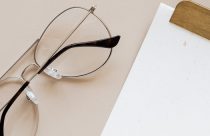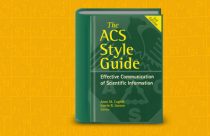How to Choose a Style Guide for Academic Writing

A style guide is a reference book that provides rules for writing, such as grammar and syntax, in specific disciplines. These include how to format citations and references, which tend to be specific to the fields of study. Here, we explain some style guides used across different disciplines to help you to choose the right one for you.
Different Style Guides
- The academic style guides listed below are used most often.
- American Medical Association (AMA): Printed by Oxford Press. The preferred style for disciplines in medicine and biology.
- American Chemical Society (ACS): Specifically geared towards chemists. Provides a source of information for every step in the publishing process. It is printed by Oxford University Press.
- American Psychological Association (APA): For the social sciences (e.g., psychology, sociology, politics). (Note: there is also an American Sociological Association but the APA stylebook still appears to be the style of choice for these disciplines.)
- Associated Press Stylebook (AP): Used by journalists, news copy, and magazine writing. It was historically written without special symbols or special fonts; however, in this computer age, the writer or typesetter can add special characters.
- The Bluebook: A Uniform System of Citation (Bluebook): Specific to the legal profession. Bluebook provides those in the legal professions with a citation format that ensures communication about sources that professionals regularly rely on and ensures communication with one another.
- Chicago Manual of Style (CMOS): Now in its 16th edition, it is used mostly in the humanities and social sciences, including history and arts. Covers the correct grammar and usage of American English, and provides information on citations and references for both fiction and nonfiction manuscripts.
- The Modern Language Association (MLA) Style Manual and Guide to Scholarly Publishing: It is used mainly in academic writing in the literature and humanities disciplines. Similar to CMOS.
- The National Library of Medicine (NLM): Often used in some AMA disciplines. The International Committee of Medical Journal Editors (ICMJE) provides format recommendations for those involved in research and publishing in medical journals.
- Scientific Style and Format (SSF): The CSE Manual for Authors, Editors, and Publishers: (Formerly, Council of Biological Editors.) Used by those from all areas of science, it is now in its eighth edition and works in tandem with CMOS.
- Turabian Manual for Writers of Research Papers, Theses, and Dissertations. It is a guide for research and academic work in all disciplines. CMOS refers students to this manual often for its ease of navigation and use.
Important Differences
English language rules don’t change much from discipline to discipline, although there are some subtle formatting differences. For example, in science writing, the serial comma is the internationally accepted format for lists, as is placing punctuation outside quotation marks (unless, of course, the punctuation is part of the quote).
Even so, most differences are in formats for citations and references. Some of the most commonly used styles are discussed here.
AMA: In-text citations are superscript Arabic numbers with periods and commas placed inside the number. The references follow the number sequence (see example).
- Citation: Johnson et al.2 provided the results of their studies in 1975.
- Reference: 2. Johnson AB, Smith CD, Houser EF. Shifts in alcohol consumption in pre-teens. Am J Clin Nutr. 1975;83(3):600–650.
Note that there are no periods after the author’s initials and abbreviations are used for journal names as listed in the PubMed Journal Database.
APA: In-text citations are author’s name and date separated by a comma. The reference uses the author’s name and year of publication. No quotation marks around the title. Italicize the journal name and volume. Present the issue number in brackets and page numbers at the end followed by a period (see example).
- Citation: (e.g., Davis, 2008)
- Reference: Davis, K. (2008). Intersectionality as buzzword: A sociology of science perspective on what makes a feminist theory successful. Feminist Theory, 9(1), 67-85.
CMOS: Uses endnotes and footnotes for references instead of listing all sources on a references page. Citations are superscript numbers. The reference numbers correspond to the citation numbers. “Ibid” can be used for multiple citations of the same source. Using CMOS’ notes–bibliography system, an alphabetical bibliography is also expected for all sources referenced. CMOS provides specific punctuation rules for references.
The CMOS author-date system is used in sciences. Instead of using footnotes and superscript numbers, this format uses the author’s name, the title, and the date. In the in-text citations, the author’s name and date are used in parentheses (e.g., Smith, 1949). There must be a reference for each citation using the same name and date and including the title of the work (see example).
- Citation: (Woodward 1987)
- Reference: Woodward, David, ed. 1987. Art and Cartography: Six Historical Essays. Chicago: University of Chicago Press.
MLA: Uses periods after author and title, with commas after version, number, publisher, and date. Location is at the end of the reference followed by a period. Note that the date is just before the location (
see example).
- Reference: Lorensen, Jutta. “Between Image and Word, Color, and Time: Jacob Lawrence’s The Migration Series.” African American Review, vol. 40, no. 3, 2006, pp. 571-86.
CSE: Offers three different styles—citation–sequence; name–year; and citation–name—provides information on each. Each can be used in scientific publishing; however, consult your journal’s author guidelines.
Choosing Your Style Guide
Don’t be confused about which guide to choose for your work. The most common are listed here and the author guidelines for the journal provide information on its preferred format. Therefore, your choice should be based on your field of discipline and modified according to the target journal guidelines.









